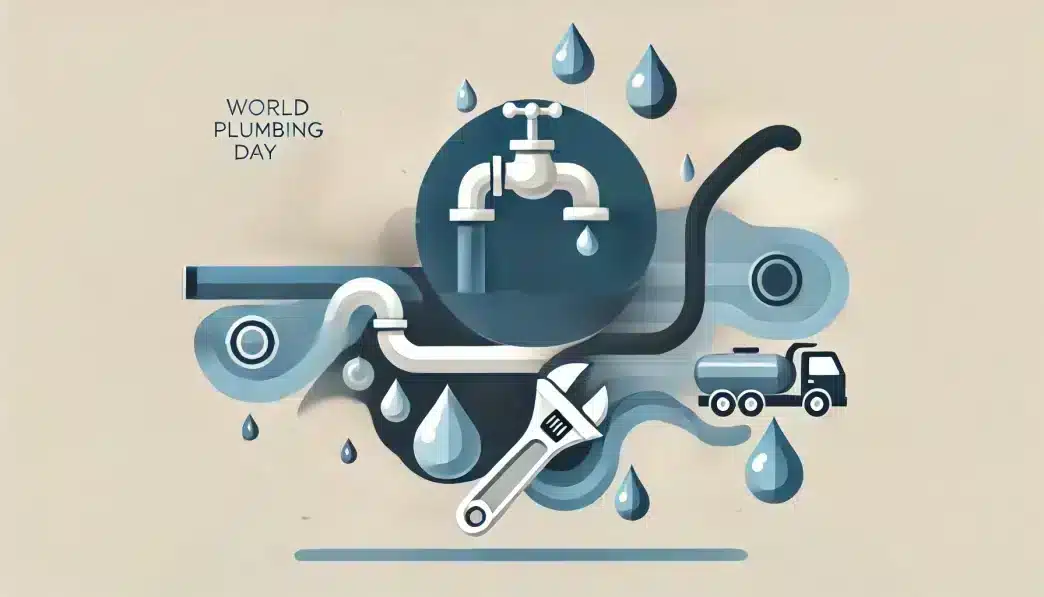What is World Plumbing Day?
World Plumbing Day is celebrated annually on March 11th across the globe. The day highlights the vital role plumbing plays in maintaining public health, ensuring environmental sustainability, and supporting economic development. It’s a reminder of how access to clean water and safe sanitation directly impacts communities worldwide.
History and Origin
World Plumbing Day was established in 2010 by the World Plumbing Council (WPC) to raise awareness about the importance of plumbing. The initiative emphasizes the direct link between quality plumbing systems, the prevention of waterborne diseases, and overall health.
By celebrating the day, the WPC aims to educate the public about the critical role of plumbers and proper plumbing infrastructure in achieving cleaner and safer living conditions. It also aligns with global efforts to address issues related to water scarcity and sanitation, contributing to the UN’s Sustainable Development Goals.
Who Observes World Plumbing Day?
- Plumbing Professionals: Celebrate their contributions and engage in educational initiatives.
- Educational Institutions: Host workshops to teach students about the importance of water systems and sanitation.
- Community Leaders: Organize events to promote access to clean water and proper sanitation.
- Nonprofits and Advocacy Groups: Highlight projects aimed at improving plumbing infrastructure in underserved areas.
- Government Agencies: Support public awareness campaigns and policy initiatives related to water and sanitation.
Themes and Slogans
World Plumbing Day often adopts themes to focus on specific aspects of plumbing’s global impact. Past themes include “Plumbing is Essential” and “Sustainable Water Solutions.” These messages emphasize the crucial role of plumbing in achieving public health and environmental goals.
Colors, Symbols, and Patterns
Colors
- Blue: Represents water and cleanliness.
- Green: Symbolizes sustainability and environmental care.
- Gray: Reflects the pipes and materials used in plumbing systems.
Symbols
- Water Droplets: Represent the significance of water as a life-sustaining resource.
- Pipes and Wrenches: Highlight the tools and infrastructure involved in plumbing.
- Faucets: Depict the delivery of clean water through plumbing systems.
Patterns
- Flowing Water Designs: Symbolize the continuous need for clean and accessible water.
- Circular Motifs: Represent the global and interconnected nature of water systems.
- Grid Patterns: Reflect the structured nature of plumbing networks.
How to Celebrate World Plumbing Day
- Host Educational Events: Organize seminars or workshops to teach communities about the importance of plumbing.
- Share on Social Media: Use platforms to share facts about plumbing’s role in public health with hashtags like #WorldPlumbingDay.
- Thank Plumbers: Acknowledge the hard work of plumbing professionals in maintaining safe water systems.
- Participate in Community Projects: Volunteer for or support initiatives aimed at improving water access and sanitation in underserved areas.
- Learn About Plumbing: Explore how plumbing systems work and their impact on health and sustainability.
Most Used Hashtags
- #WorldPlumbingDay
- #PlumbingMatters
- #CleanWaterForAll
- #SustainablePlumbing
- #SafeSanitation
Why is World Plumbing Day Important?
World Plumbing Day is a reminder that safe water and sanitation are essential for health and dignity. By promoting awareness about plumbing’s impact, the day inspires action to improve water infrastructure globally. It also emphasizes the role of plumbers as unsung heroes in maintaining clean, safe, and sustainable water systems.
The day connects communities, governments, and organizations to address pressing issues such as water scarcity, climate change, and sanitation challenges. Celebrating World Plumbing Day fosters understanding of how this often-overlooked profession plays a central role in building a healthier and more sustainable future.
Features
- Environment Sustainability and Climate
